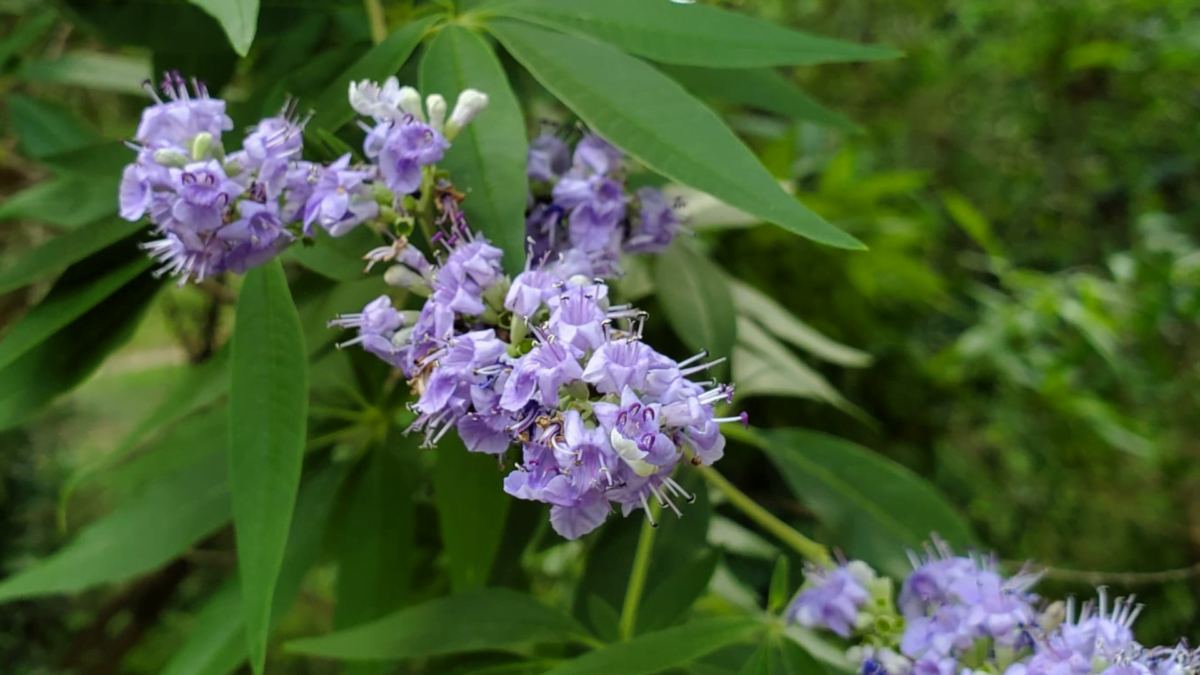Scientific name: Vitex agnus-castus
Other common names: Chasteberry, Abraham’s balm, lilac chastetree, monk’s pepper
This plant profile is a work in progress.
Despite its frequent use and association with the female reproductive system, the common names of this plant are owed to monks’ use of the plant as an inhibitor of sexual desire during the middle ages. Monks also used the leaves and berries to flavor food.
In addition, chaste trees are used to make dyes and provide a strong material for basket weaving dating back to Roman use. The prolific autumn blooms are great nectar providers for honey production.
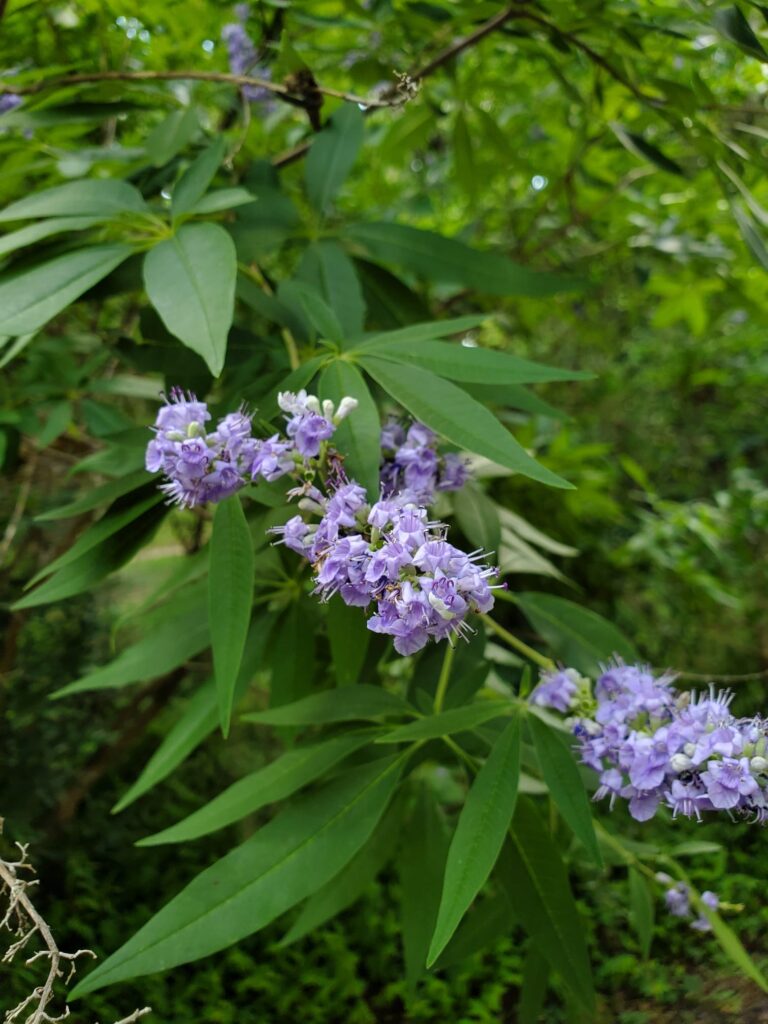
by Eva Fiallos-Díaz
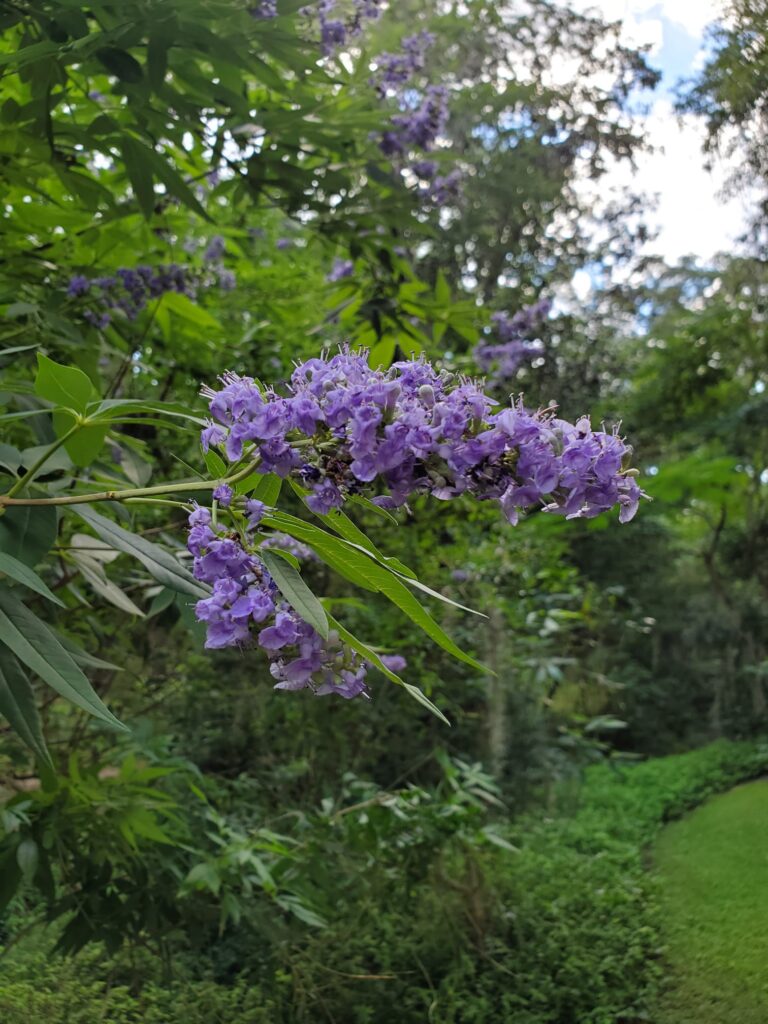
by Eva Fiallos-Díaz
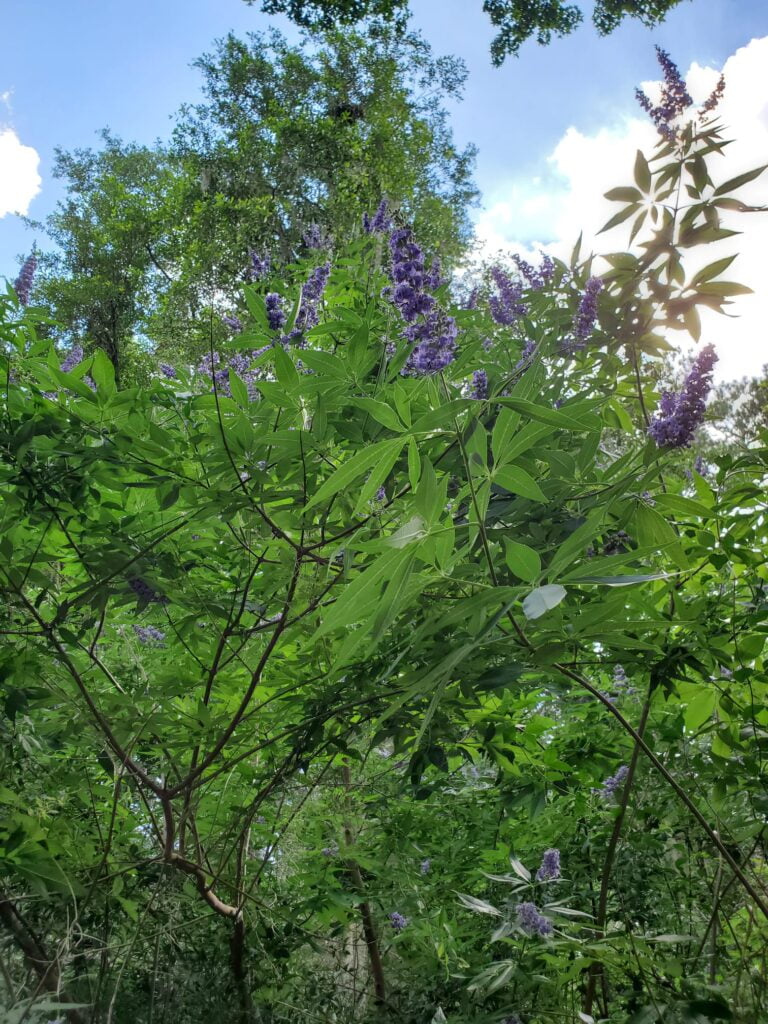
by Eva Fiallos-Díaz
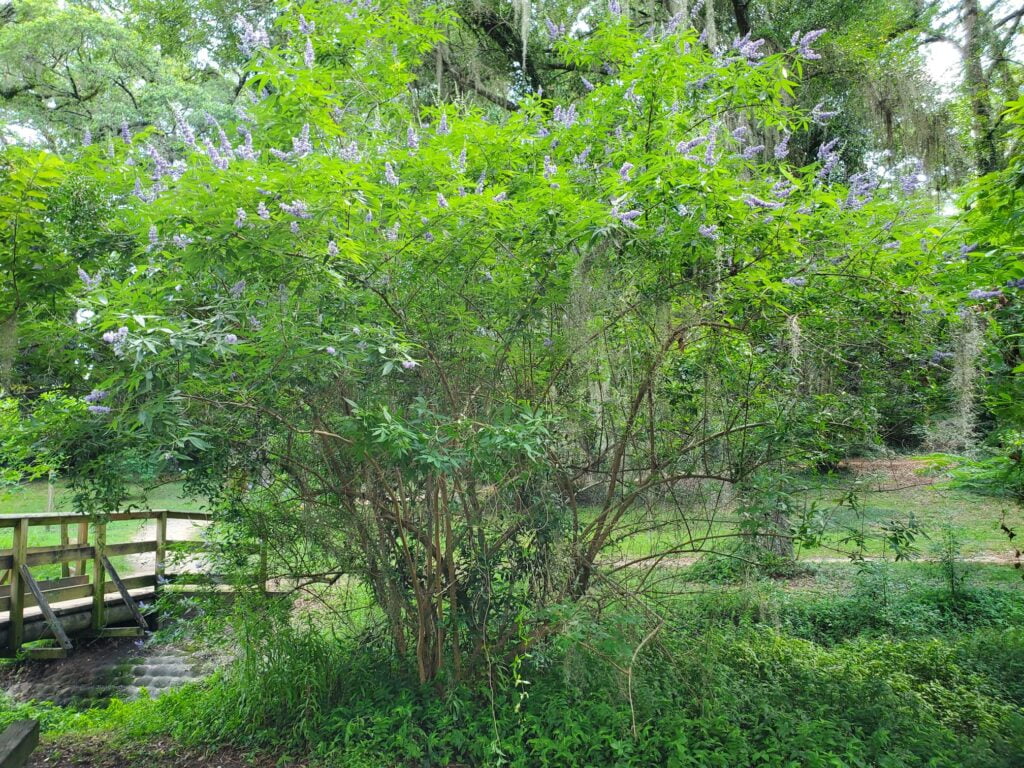
by Eva Fiallos-Díaz
Identification
Chaste tree is considered a deciduous shrub or small tree that takes on a vase shape. It can grow 10-15 feet tall. It blooms from late Spring through Fall. The blue-purple or lavender flowers have both male and female organs (hermaphroditic) and are pollinated by insects. They can often be found next to wet places, like streams. The leaves are said to have a sage scent to them. They resemble an open hand (palmately compound leaves) and are thought to resemble those of marijuana (Cannabis sativa) and are a lighter sage green to blue-green underneath.1
Growing/Foraging
Chaste tree is native to the Mediterranean region and Asia. Vitex agnus-castus is considered one of the few temperate zone species and can be grown in the USDA hardiness zones 7b-11.2 Chaste tree will grow well in full sun to part shade, though the best flowering occurs in full sun. It is grown as an ornamental tree in the southeastern United States. Root rot will occur in soil that is too moist. It can tolerate a range of pH, acid-neutral -basic alkaline.
Sustainability
It is generally plentiful when grown in the ideal conditions.
Medicinal and Food Properties
The fruit or berries of the chaste tree are the main part used medicinally. They are primarily used to treat the symptoms of premenstruation (PMS), menstrual irregularities, and menopause. This includes cramps, headaches/migraines, acne, mood swings, breast pain and tenderness, hot flashes, fatigue, weight increase, and more.
While the mechanisms responsible for the effects need more research, scientists believe that this plant’s medicinal properties are a result of the regulation of prolactin and progesterone. Prolactin is the hormone that produces milk in the mammary glands of breasts. People who experience breast tenderness or breast pain appear to produce too much prolactin. Lowering prolactin results in decreased estrogen levels and increases progesterone levels. Another effect is that the hormone that prompts the release of eggs, the luteinizing hormone (LH), is stimulated so that the corpus luteum can be fully developed.3 Although it’s inside your ovaries, the corpus luteum’s job is to make your uterus a healthy place for a fetus to grow. It releases a hormone called progesterone that prepares your uterus for pregnancy. Once it’s no longer needed to make progesterone, your corpus luteum goes away.4 The role of progesterone is to prepare the body for pregnancy by stimulating glandular development and the development of new blood vessels. This provides a good environment for implantation by a fertilized egg.5
In a randomized double blind study, chasteberry meaningfully diminished the symptoms of menopause, anxiety, and vasomotor dysfunction (night sweats, hot flashes, and flushes). 6 The results were congruent with those of an earlier study. 7
Like with other types of medications used to balance hormones, chasteberry is not fast acting. It may take 3-4 months of regular use to start to see its effects.
The essential oils from chasteberry fruits and leaves have been used as insect repellent. They are also thought to have antibacterial effects which can explain the use of vitex for acne.
Safety
Researchers report that 30–40 mg of dried fruit extracts, 3–6 grams of dried herb, or 1 gram of dried fruit per day appear safe. Mild side effects can occur, including belly upset, nausea, headaches, or skin rashes.8
Chasteberry preparations are not recommended for pregnant or nursing mothers because there is not enough information on its safety.9
It is also recommended that people who have hormone sensitive cancers avoid chasteberry products.
Researchers also believe it may have an impact on the efficacy of birth control pills, hormone replacement therapies, Parkinson’s disease medications, and certain kinds of antipsychotic medications.
Preparation
Herbal chasteberry preparations are available in many different formulations. This includes vitex chasteberry drops (tinctures and glycerites), capsules, tablets, and chasteberry tea.
The recommended dose for our tinctures or glycerites is 35-45 drops taken over the course of 3 times a day (usually in drinks). This is one dropper full, three times a day. The dosage depends on the extraction ratio.The standard dose is between 150-250mg.
Chasteberry Tincture
[PRIMARY IMAGE]
Ingredients
- 90-100 Proof Vodka
- Chasteberries
- Glass jar with lid
- If you’d like, you can grind your berries in a mortar and pestle. This might be best if your berries are dry. You can purchase your berries or forage for them, if you have a local source.
- Fill the jar halfway with berries. Then fill the whole jar with vodka.
- Store in a cool, dark place. Shake daily (or as you remember). Let the berries sit for at least 4-6 weeks. I like to set an alarm to remind me when it is time for the final step.
- Strain the berries out and compost.
- Bottle your tincture in a dark jar.
Sources

